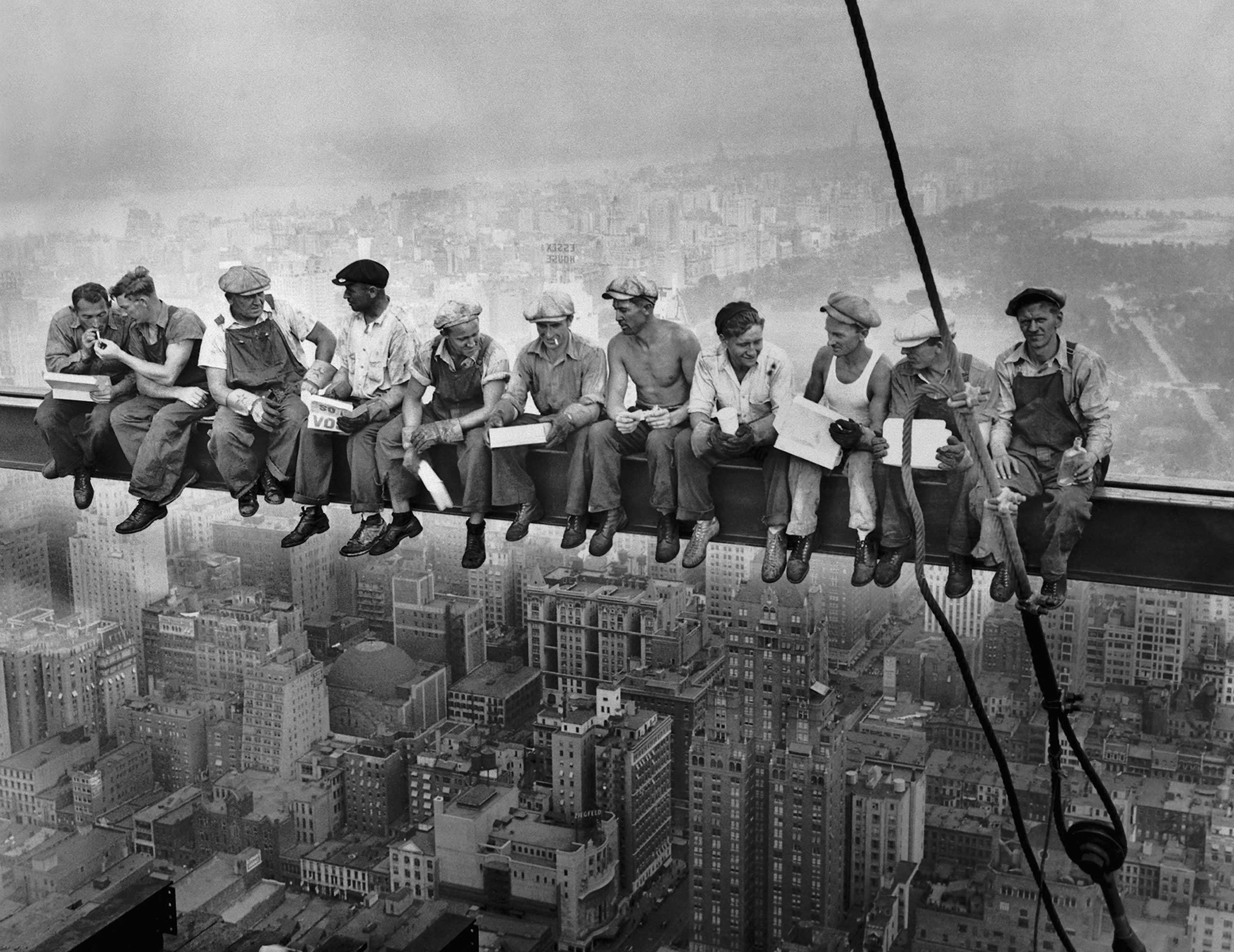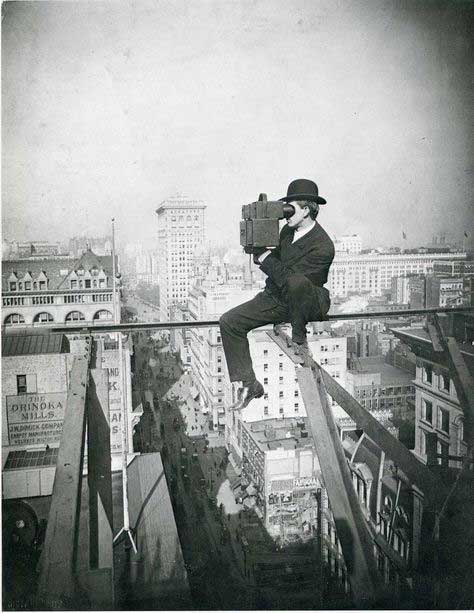Lunch atop a skyscraper: This is, probably, the most epic picture of a lunch ever taken. Its protagonists are not influential or known characters (in fact, until today, only 2 of the 11 men photographed have been identified), but the epoch in which it was taken is one of the many aspects that made this a legendary photography: New York, September 20 of 1932, in the middle of the Great Depression.
It was a grim chapter for the United States, since unemployment and misery were the norm at the time. The image, of great visual power, became a symbol of the ambition and resilience of the United States in a time of crisis.

During those years, uncertainty was positioned throughout the country. But on West 49th Street, a pillar of hope was being built: the skyscraper that would be known as 30 Rockefeller Plaza.
The image is a sharp reflection of the vertical growth that has characterized and given identity to Manhattan. It has since become an emblem of the city, affirming the romantic belief that New York is a place without fear to tackle projects that would scare the less-risky cities.
Despite the fact that the photo became a symbol of resistance, it should be mentioned that, it was not simply taken at random by the expertise of a photographer who had the unique opportunity to “immortalize” the lunchtime of 11 unperturbed builders on a steel beam atop the 70-story RCA building.
It was taken for advertising purposes. In those years, steel represented one of the symbols of the American dream. The industry was supported by the work of thousands of immigrants who came to build a new country in very precarious working conditions. the effects of the great depression created the need for new paradigms, and the steel was a perfect symbol for that purpose.
There are other photos of the same day, in which the same workers appear playing football, holding American flags or pretending to sleep on that steel beam, but the image that transcended was that of the lunch. It was published in the New York Herald Tribune, seven months before the building opened.
Much has been written about this photo and one of the things that attracts attention is that, as it is said, it served to denounce the lack of worker safety measures at that time. The idea makes sense, since in the construction of these skyscrapers it was not uncommon for a worker to die due to a fall of high heights.
Nevertheless, it is difficult to affirm that this was the initial intention: by seeing some of the images of the photographers who made this report, we can verify that they were subjected to a risk identical to that of the construction workers.
Precisely, that presence of several photographers leads us to another of the controversies linked to the photo: who is its author? The answer is that no one knows for sure. Since 2012, the authorship is officially anonymous, but there have been several names with which it has been speculated.
At first, it was attributed to Lewis Hine, who in 1931 had documented the construction of the famous Empire State Building, but the date does not coincide with the taking of this photo, and the building in which the workers are working is not the Empire State.
For many years, it was claimed that the author was Charles C. Ebbets, but other photographers such as William Letwich and Thomas Kelly were also there that day.
The original negative of the photo is stored in Pennsylvania, in a place called “Iron Mountain”, a huge security facility where works of art of incalculable value are stored next to government documents of great relevance.
The original plate is very damaged but several high-quality copies were made from which it is possible to make negatives.
It became such an iconic image that even Ken Johnston (the head of the Corbis archives) says it is “the most recognizable” of the more than 20 million in the Corbis archive. And, he says, it is also its “best-selling” photo, because it has generated more licenses than the agency owns from personalities such as Albert Einstein or Martin Luther King.








